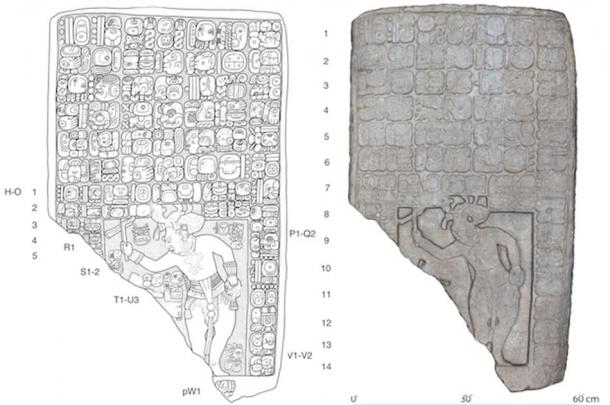Ancient Maya kingdom unearthed in a backyard in Mexico
A team of archeologists from the backyard of a rancher in Mexico have discovered the site of a long-lost ancient Mayan empire. The town was discovered with the help of a food vendor.
Since 1994, when references to it were discovered at inscriptions on other Mayan excavation sites, scientists have been searching for signs of the ancient Mayan kingdom of Sak Tz’i ‘. Apart from the reference, the kingdom is also mentioned in other sculptures.
It so happens that, in 2014, the University of Pennsylvania graduate student Whittaker Schroder was driving around Chiapas in southeastern Mexico when a man selling carnitas on the side of the highway informed him that a friend, a cattle rancher, had found an ancient stone tablet.
Upon confirming the authenticity of the tablet, Schroder and another graduate student from Harvard, Jeffrey Dobereiner, informed anthropology professor Charles Golden and Brown University bioarchaeologist Andrew Scherer of the find.
From that time, it took years before the team received permission to excavate on the property, with the team making sure that the government would not confiscate the rancher’s land.
This is because, in Mexico, cultural heritage such as Maya sites are considered the property of the state. So, the team worked with government officials to make sure that the rancher would get to keep his land.
The research team believes that the archaeological site unearthed in the rancher’s backyard, Lacanja Tzeltal, is actually the capital of the Sak Tz’i’ kingdom that was first settled in by 750 B.C.
At the site, the team found evidence of a marketplace where goods were sold, a 45-foot pyramid, as well as the ruins of several structures that likely served as the residence of the elites.
The team also found evidence of a ball court and a royal palace, as well as Maya monuments with important inscriptions. Dozens of sculptures were also recovered from the site, although most of them were already degraded. Ultimately, the best-preserved artifact from the site remains to be the tablet from the rancher.
Being a relatively modest kingdom compared to the others, Sak Tz’i’ was surrounded on all sides by more powerful states. This is evidenced by the walls that were possibly built to keep invaders out.
According to Golden, it is possible that mid-sized Sak Tz’i’ kingdom’s survival among the more powerful kingdoms depended not just on its military strength but also on making peace with its neighbors.
That said, little is still known about how the kingdom survived amid the hostilities they likely faced from other, more powerful kingdoms.
For now, the team is planning to go back to the site in June to stabilize the buildings that are in danger of collapsing well as to map the ancient city with modern tools and to look for more artifacts.

The study describing the find is published in the Journal of Field Archaeology.






